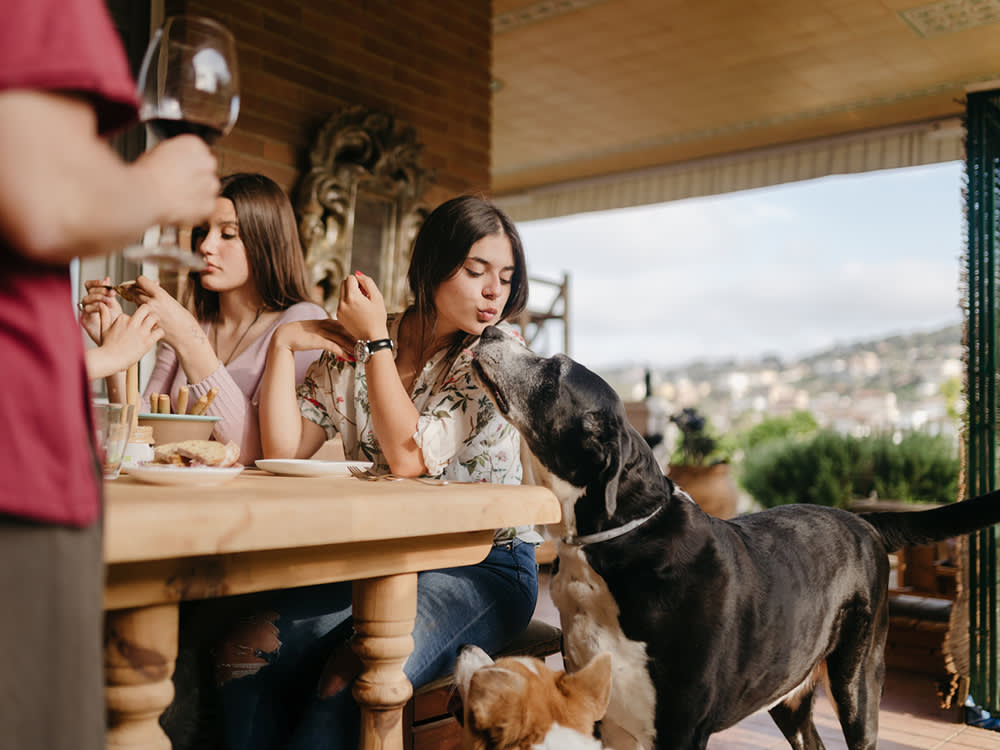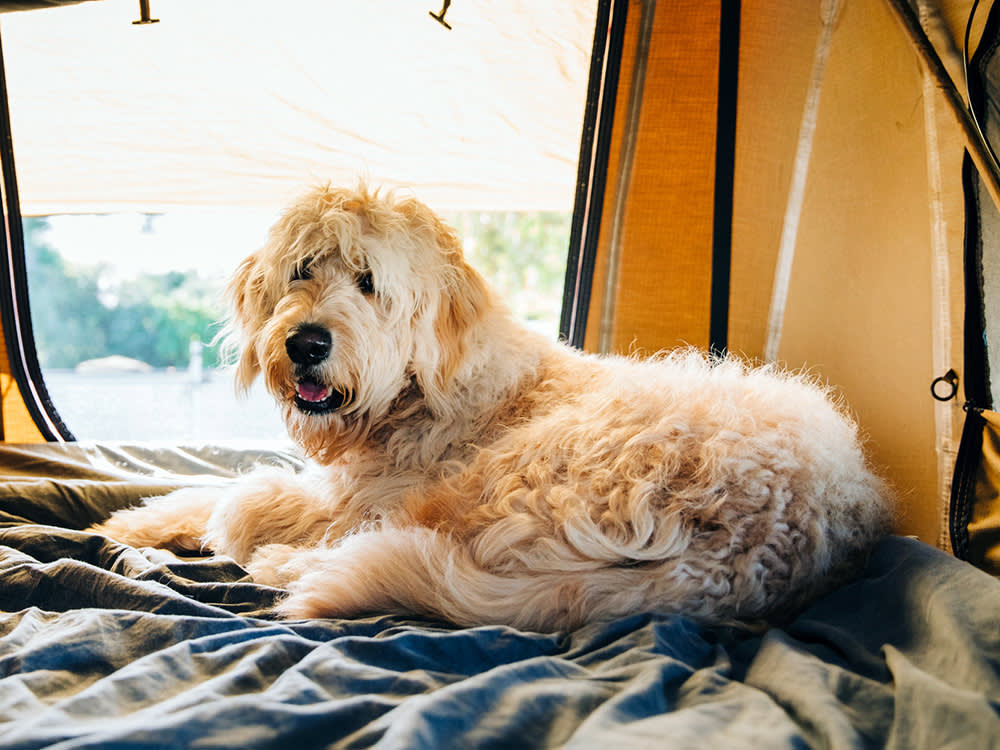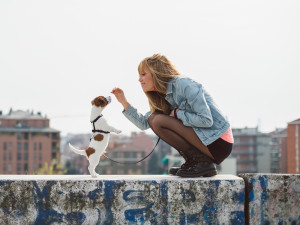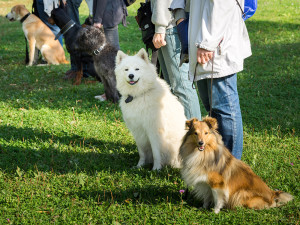How to Stop Dogs From Getting Overly Excited When Holiday Guests Arrive
Expert advice for people with dogs who jump, bark, and generally go nuts when people come over.
I’m hosting a big holiday dinner soon, but I’m a little concerned about my dogs’ behavior. They are pretty high-energy pups, who tend to jump on, bark at, and lick anyone who enters our home. Most of my friends love dogs, but not all. In the past, I've tried redirection, keeping the dogs confined in another room (this curbs the jumping and licking, but not the barking), and having a dedicated dog person monitor the dogs. Do you have any other tips?
Inviting people over can be difficult for people with exuberant, friendly dogs. Luckily, there are a lot of ways to ease the social awkwardness when overexcited dogs (sometimes literally) with humans — and you’re already on the right track. The smallest details can make a big difference, so by adjusting what you’re already doing and adding a few simple new tactics, we can create an approach that will help your pups be their best selves. Here are some ways to tone down your dog’s enthusiastic greeting style.
Trick question: All dogs are perfect! But find out which type is the best fit for you.
Redirect your dog with an irresistible item.
This can work like a charm, as long as what you offer is fantastic enough to keep their attention. For toy-motivated dogs, a game of tug or fetch as guests arrive might help them redirect their excitement. Using top-quality, rarely offered chews or treats can make all the difference.
A list of options that may refocus even the most social dogs’ interest includes real bones; Kongs stuffed with steak, chicken or peanut butter; bully sticks (with caution for puppies); Greenies; and stuffed cow hooves. (One caveat: Check with your veterinarian to determine what items are safe for your dog and which should be avoided.)
How much do you spend on your pet per year?
Briefly confine your dog in a room, behind a gate or in a puppy pen.
Consider moving your dogs to another room while guests enter and are seated. The whole to-do of an entrance — being new people as the door opens, then watching them cross the threshold and enter the house — can be particularly stimulating for pups. Some dogs are able to greet guests far more politely and calmly if they don’t witness their actual arrival. If your dog comes out of another room to see people already seated, they may be less excitable.
The same goes for seeing a guest from behind a gate, which prevents them from rushing up to greet them. That said, some dogs get more revved up if they’re gated-off from visitors — maybe because they��’re frustrated. Test how your dog reacts in advance.
Train your dog to go to their “place.”
There’s often so much focus on what we don’t want our dogs to do that we miss opportunities to teach them what we do want. How would you like your dogs to greet visitors? With that picture in mind, actively teach them to do it. One option is to train them to sit and stay in a specific spot when visitors arrive. Make it a comfortable place, such as a dog bed or bean bag.
If visitors want to greet the dogs, they get to interact; if the visitors choose not to, then the dogs stay quietly in their place. Begin teaching them the behavior (going to their spot) when there are no distractions, and work up to more challenging and exciting situations.










